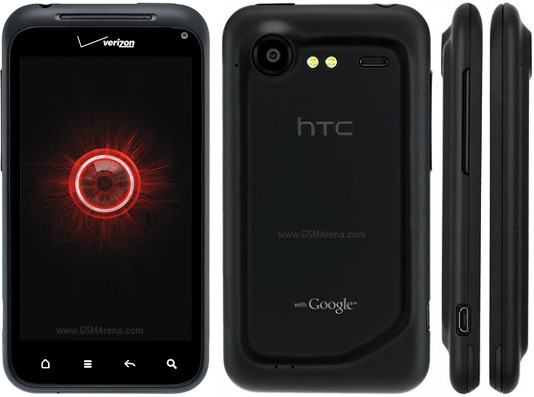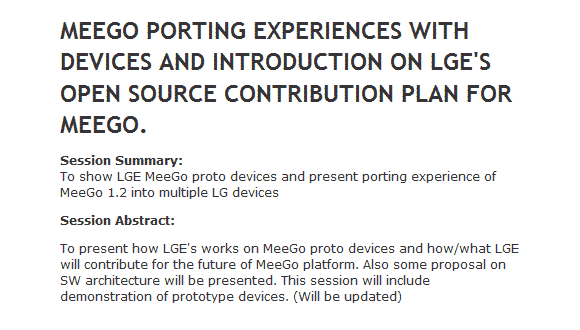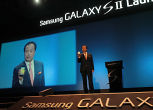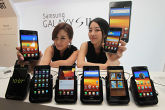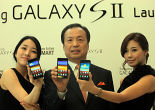
It wasn't that long ago that we were jonesing for a Nexus One on Verizon. What HTC gave us instead was the Droid Incredible, with the same 1GHz Snapdragon CPU and gorgeous 3.7-inch AMOLED display -- not to mention a better camera (8 megapixel vs. five), 8GB of built-in flash storage, an optical trackpad, HTC's Sense UI on top of Eclair, and a dash of funky industrial design. The Incredible was an impressive phone with a lovely camera, marred only by questionable battery life and lack of supply, forcing HTC to build a Super LCD-equipped model to satisfy demand. Judging by the popularity of the Incredible, it came as no surprise that following HTC's announcement at MWC, the Incredible S eventually became Verizon's Droid Incredible 2. With a 4-inch Super LCD display, global CDMA / GSM radio, front-facing camera, updated internals (including 768 MB of RAM), trick capacitive buttons, and a Froyo-flavored serving of Sense, the Incredible 2 seems like a worthy successor to last year's Incredible. Does it live up to our expectations or is it just another fish in the crowded sea of Android? Does it significantly improve upon the original formula or is it merely a refresh? Hit the break for our review.
Hardware
There's no doubt that the Incredible 2 is an extremely handsome, if not sightly austere looking handset. It's much like the interior of a late 20th century BMW -- all class, all business, and all black. Compared to the original, it's slicker and softer, with rounder edges and much better build quality thanks mostly to the ultra-rigid machined and anodized black aluminum screen bezel. Gone are the old model's whimsical red accents, red innards, and red battery. Instead you'll find a translucent black chassis and a black battery under the hood. Even the bevel around the earpiece is finished in black. Yes, this is Darth Vader's phone, the Droid he's been looking for. The back cover features the same grippy soft-touch finish and unique layered motif as the Incredible, but instead of two "steps", there's only one this time around. Like the HTC ThunderBolt, the Incredible 2 includes contacts (missing from the Incredible S) for an optional inductive charging back, and integrates some of its antennae into the battery door. Pop the cover, and there's a Verizon / Vodafone SIM under the 1450mAh battery plus a 16GB microSD card pre-installed.

Despite the bigger screen, the new version is only marginally larger than the original, about the same weight, and actually a smidgen thinner. The layout is almost identical to its forebear -- the headphone jack and power button have swapped places, and the camera flash is now arranged horizontally instead of vertically. On the left side you'll find the volume rocker and micro-USB connector while the right side is devoid of any controls. The top edge hosts the power button, a standard 3.5mm headphone jack, plus a secondary mic, while the bottom edge hides the primary mic, along with an indent to pry the battery cover off. A sheet of Gorilla Glass protects the 4-inch display, the 1.3 megapixel front-facing camera next to the Verizon logo on top, and the four capacitive buttons at the bottom. The earpiece and notification light live in the aforementioned aluminum screen bezel above the glass. In back there's an 8 megapixel autofocus camera with dual-LED flash on top, a rather tinny sounding speaker, the embossed HTC logo, and the "with Google" stencil towards the bottom.
The 4-inch WVGA Super LCD display deserves a special mention. It's one of the best LCD-based panels we've come across -- bright without any leaks or spots, with naturally saturated colors, deep ink-like blacks, and superb viewing angles. Other than pixel density, it gives the iPhone 4's IPS screen a run for its money and even warrants a nod or two from the notoriously smug Super AMOLED crowd. We've mentioned the trick capacitive buttons before, which rotate when the handset switches between portrait and landscape for apps that support both display modes. It turns out the buttons are drawn by groups of tiny LEDs which are turned on and off based on orientation.

At first glance, the Incredible 2 specs look somewhat pedestrian in this day and age of dual-core processors, qHD displays, and LTE radios. But don't be fooled by the numbers. That 1GHz CPU is Qualcomm's latest generation MSM8655 Snapdragon SoC with Adreno 205 GPU -- it's fast, power efficient, and backed up by a generous 768 MB of RAM. Like with the Thunderbolt (which shares the same processor), we consistently recorded Quadrant scores ranging from 1500 to 1700 -- pretty remarkable for a single core device running Froyo. You'll find the usual collection of sensors on board (compass, gyroscope, accelerometer, proximity, and ambient light) along with the standard assortment of radios (WiFi b/g/n, Bluetooth 2.1 + EDR, GPS / AGPS, and even FM) plus Qualcomm's popular MDM9600 Gobi module (also used in Verizon's iPhone 4), which supports CDMA together with quadband GSM and dual-band HSPA (2100 / 900MHz). In our tests, calls sounded great thanks to the dual noise-reducing microphone setup, and reception was problem free.
Battery life is excellent for an Android smartphone. Starting from a full charge, the Incredible 2 managed 36 hours and 40 minutes of up time before we decided to plug it back in with 7% battery life remaining. That was mostly light use -- reading email (3 accounts), checking Twitter, and occasionally replying or posting -- with all the radios (except Bluetooth) turned on. Still, this included 30 minutes spent with the handset strutting its stuff in front of the camera for our video review, 20 minutes being used as a hotspot, taking / uploading a few full-size pictures, and only 6 hours idling while we slept.
Camera
The camera on the original Incredible was no slouch. It could be coaxed into taking fantastic shots given enough care and attention. The Incredible 2 takes this formula to the next level, with a camera that's capable of producing amazingly realistic pictures without too much effort. It features HTC's next generation 8 megapixel sensor with autofocus optics (also found on the Thunderbolt) plus a dual-LED flash. Color balance and exposure are top notch. Low-light performance is impressive. Noise is kept under control without compromising detail. In fact, we're pretty sure we're dealing with a backside-illuminated sensor here. There's a certain clinical precision to the pictures captured with the Incredible 2 that we've really come to appreciate -- the camera simply gathers a tremendous amount of information, resulting in amazing shots.
The Incredible 2 captures 720p (HD) video at 30fps with decent results. While it performs significantly better than its predecessor, video recording isn't as stellar as photography. The frame rate isn't quite as smooth as with some other devices (the iPhone 4 comes to mind), and sound quality leaves room for improvement. The camera interface offers a plethora of settings: there's touch-to-focus (for both stills and video), flash mode, Photo Booth-like effects, and additional options nestled within the menus (such as timer, exposure, while-balance, resolution, ISO, and face detection). The digital zoom is activated by pressing the volume rocker or by using an on-screen slider. Unfortunately, there's no dedicated 2-stage camera button, no panorama mode, and the 4-inch Super LCD display, while gorgeous, tends to wash out in direct sunlight, making it difficult to properly frame shots.
Software
While the Incredible 2's hardware is supremely refined, things are bittersweet on the software front. It's running Sense, which we've reviewed in detail alongside the Incredible S. We appreciate that it brings a polished, friendly, and consistent user experience across HTC's multitude of devices, and also provides the company with a strong brand identity, but we're just not fans. The problem is that with each revision of Sense we feel more alienated from what we came looking for in the first place, namely Android. Sense is starting to look and feel like its own OS -- Android in a parallel universe -- with almost every aspect of the user interface getting customized, and deviating significantly from the Android way. Certain changes are positive, like the cool time / weather widget, the fast boot feature, and the much improved music player. Others are frustrating, like the the convoluted dialer / call log and the poor keyboard layout (who decided to put the hide button just below the shift key?!) We realize that it's all a matter of taste, and that some people will choose to go down the rabbit hole into Sense wonderland, but we're purists. So HTC, give us a way to disable Sense, and all will be forgiven. Oh, and third-party launchers and keyboards don't count - like most people, we don't have the time or interest to customize our phones beyond installing a few apps.

Sadly, the Incredible 2 ships with Android 2.2.1 (Froyo) which, despite having stayed properly refrigerated for the past 9 months, is getting rather stale. The good news is that the Incredible S is in the process of receiving an Android 2.3 (Gingerbread) update, so Verizon's version can't be far behind. Overall, we don't have much to complain about -- Froyo still provides solid performance, especially when paired with speedy internals. The phone feels snappy and light on its feet all around. It's clear that HTC's spent time fine tuning Sense to make it highly responsive. Still, there's room for improvement in some areas like the web browser which, while loading and rendering pages briskly, falls short of matching the rest of the user interface in terms of smoothness when scrolling and zooming around heavy sites like Engadget.
The most glaring issue we have with the Incredible 2 is the criminal amount of crap ware that Verizon decided to pre-load on the handset -- apps that can't be removed and will forever litter the app tray. Some of them, like Adobe Reader, Kindle, Quickoffice (basic version), Skype, and Slacker are apps you'd likely want to install anyway. Others, such as Blockbuster (a shortcut to the Market), Let's Golf 2, NFL Mobile, and NSF Shift don't have the same widespread appeal, but are passable. But it's with apps like City ID, My Verizon Mobile, V CAST Apps, V CAST Media, V CAST Music, V CAST Tones, V CAST Videos, and VZ Navigator that things become downright ludicrous. Apparently Verizon wants to lump its sexy flagship 3G Android smartphone together with its generic dumb phones by contaminating it with utterly meaningless carrier-branded apps and services. We can only hope that a few heads will roll in Verizon's marketing department after we publish this review, and that common sense prevails with a Gingerbread update that allows us to uninstall the offending apps.
Wrap up

We'll come right out and say it: the Droid Incredible 2 is the best 3G Android smartphone on Verizon today. If you live in a 3G-only area or you can forgo LTE (and the Droid Charge), the choice basically comes down to the Incredible 2 and Verizon's iPhone 4. With this device, HTC is pushing the single core Snapdragon platform to the limit, then packaging it into an attractive and beautifully finished product. It improves upon the already excellent Droid Incredible with a nicer screen, an even better camera, global roaming capability, and most importantly, amazing battery life. It's an incredibly (ahem) well rounded handset -- the perfect storm of quality, refinement, power, and efficiency -- as long as you can live with Sense. And that's the crux of it -- while we think Sense will appeal to many people, we feel that HTC is doing its core audience of passionate, tech-savvy, pure Android aficionados a disservice by not providing a way to disable it (or at least making it easier to install custom ROMs via an unlocked bootloader). This, together with the insane amount of pre-loaded crapware, are the only major issues we have with respect to the software. Of course we'd have liked to see Gingerbread available out of the gate, but this looks like it will be remedied soon. In the end, the Incredible 2 isn't a fish in the sea of Android -- it's a shark seeing Verizon red and ready to devour the competition. Considering how much of a runaway hit the original Incredible was last summer, perhaps HTC should have called this new version the Jaws 2?













